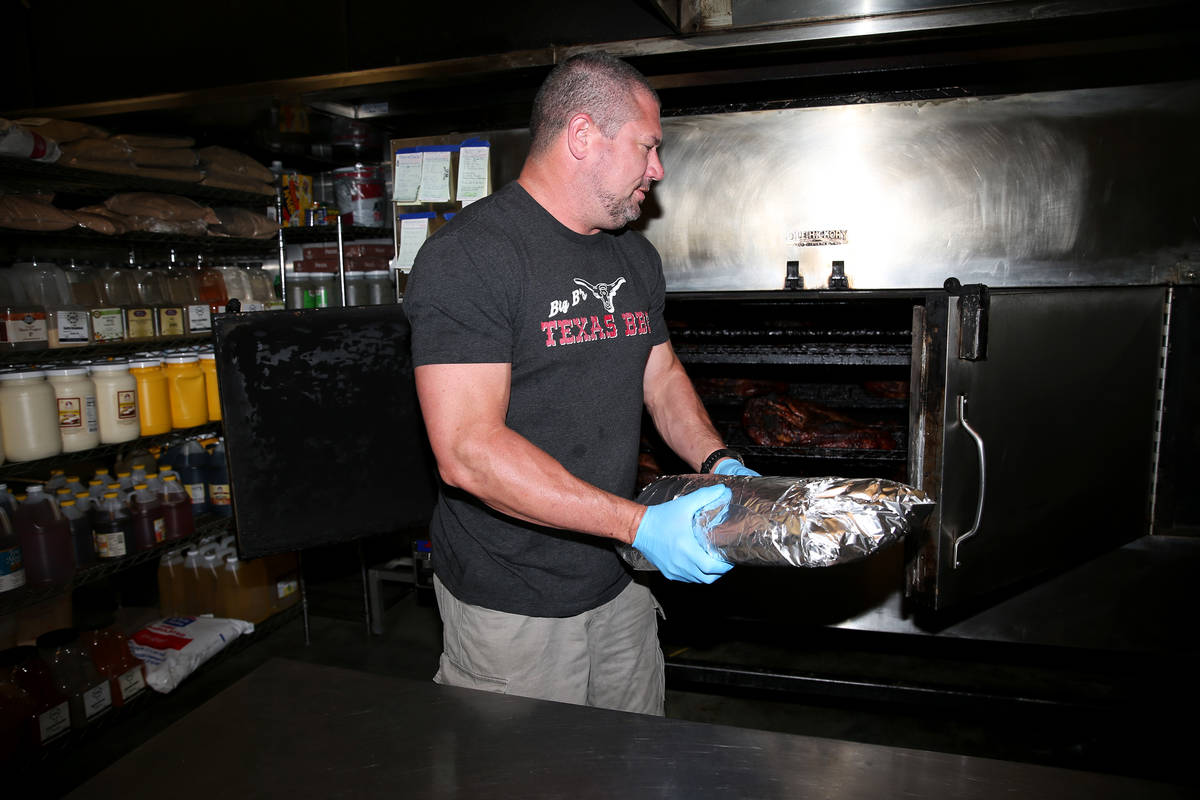Tips for home cooks to have a smokin’ barbecue season
As backyard barbecue season heats up, we asked local pros to share tips for home cooks. Here’s some of their advice.
Equipment
You don’t need to buy a professional smoker to make good backyard barbecue. But the equipment you use can definitely affect taste.
“I use a Traeger grill at home, which is a pellet grill, mainly because it helps the meat retain a lot more moisture,” says Mike Moore of Rollin Smoke Barbecue (multiple locations, rollinsmokebarbecue.com). “And they have such a wide variety of pellets that you can use.”
If that’s not an option, Gerald Casas of Braeswood BBQ in the Arts District (1504 S. Main St.) says you can get creative with what you have.
“If you have something like a Weber grill that uses charcoal, I would suggest making an offset fire with those coals,” Casas says. “Get all of the charcoal, move it to one side of the little pit, and that’s where you’re going to be having your heat source. And then, as you’re cooking, you can control your smoke with wood chips. Every 15 minutes you can throw in a handful of maybe mesquite, maybe post oak, any of the flavored woods.”
Heat
“Don’t get in a hurry,” says Brian Buechner of Big B’s Texas Barbecue (multiple locations, bigbztexasbbq.com). “Keep it at a lower temperature, and that way you won’t burn the meat.”
Moore concurs, citing the conventional wisdom that, “If you’re looking, you’re not cooking. You just gotta cook it low and slow.” He encourages keeping a thermometer on hand to check the meats’ internal temperature.
“You can find decent quality thermometers that turn themselves on and off when you close them, on Amazon for $8 to $12,” Moore says. “And they’re magnetic, so they’ll stick right onto the side of your smoker or grill. When in doubt, you just kind of want to temp it out.”
Meat
If you want to cook ribs, Casas loves St. Louis cut pork spare ribs, which he says you can find “at any of your supermarkets.”
“It takes the prep work out of the butchering,” Casas says of the cut. “It’s already done for you, so it’s nice and trim. If you’re doing them on a small grill, you can cook them and wrap them and potentially be done in an hour and 45 minutes.”
If you prefer poultry, Buechner says, “I always want to use dark meat, because it’s where the flavor’s at. The breast is kind of bland, and it dries out on you.” For those who want seafood, he recommends “halibut or salmon — just thicker, more sturdy fish for the grill — because a lot of (other) fish is going to fall apart.”
Sauce
While there are plenty of great commercial sauces available, it can be fun creating your own. There really are no limits, other than your own taste. The pros did share a couple of starting points, however.
“I’m from eastern North Carolina, so I’m used to vinegar,” Moore offers. “Vinegar and ketchup, and you can kind of go from there with spices: mustard and sugar, paprika, different things for different heat values.”
Casas starts with a sweeter base, recommending you “take some ketchup, add a little bit of extra sugar, add some liquid smoke, maybe some vinegar, and that’s a nice base, and a nice start to sort of figure out what you’re flavor profile is.”
Buechner notes that when it comes to adding sweetness there are alternatives to sugar that can add character to a sauce. “If I’m making a sauce at home, I might use sorghum, I use molasses,” he says. “They just add a uniqueness.”
Contact Al Mancini at amancini@reviewjournal.com. Follow @AlManciniVegas on Twitter and Instagram.


















